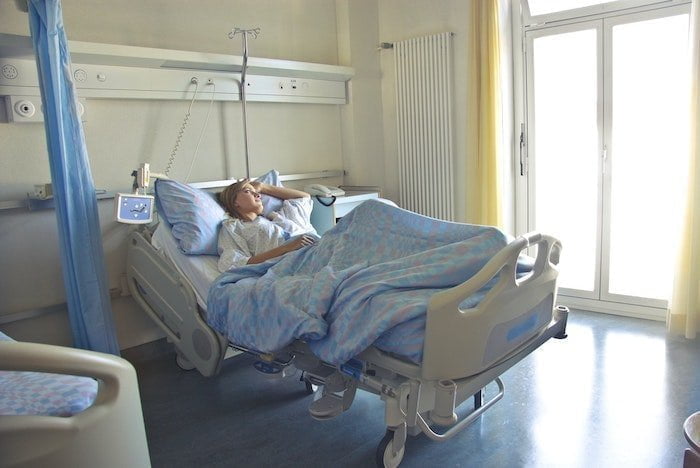Quick links for chronic liver disease
- What causes chronic liver disease?
- Stages of development – What are the symptoms of chronic liver disease?
- What are the complications of chronic liver disease?
- Risk factors of chronic liver disease
- What are the early signs of chronic liver disease?
- Diagnosing chronic liver disease
- Treatment for chronic liver disease
- How to get more help for chronic liver disease
- References for chronic liver disease
The liver is a key component of the body.
It is responsible for making proteins and filtering unwanted waste, as well as several other important functions that keep the body working as normal.
While multifunctional, the liver is also very susceptible to damage, often as a result of the substances it has to process and filter. [1]
Exposure to more toxic materials, such as alcohol, puts it at risk of scarring.
Scarring as a result of excessive alcohol consumption can cause several problems, predominantly, chronic liver disease. [2]
This condition is extremely dangerous and, if one is believed to be suffering from it, they should seek professional treatment as soon as possible.
What causes chronic liver disease?

Patient and healthcare worker sat at home discussing chronic liver disease
Chronic liver disease can be caused in several ways, including via an infection, heart failure, or high cholesterol.
The most common way, however, is through alcohol abuse.
Alcohol is a toxic substance, meaning it needs to be filtered and processed when it enters the body.
After hitting the bloodstream, alcohol arrives at the liver where it is broken down into harmless chemicals before recirculating throughout the body.
The liver can usually filter 1 unit of alcohol per hour, [3] but if too much is consumed in a short period of time, the organ is not able to process the influx fast enough.
When this happens, alcohol begins to accumulate in the body, exposing the liver to a higher concentration of it. This can lead to tissue scarring, or cause cells to die.
The liver is able to regenerate cells over time, but sustained alcohol abuse can kill cells faster than they are able to grow back. After several years of this, the cell count within the liver can be worn down, triggering chronic liver disease.
Stages of development – What are the symptoms of chronic liver disease?

Two people sat together discussing chronic liver disease
Due to the gradual degradation of the liver as a result of prolonged alcohol abuse, the condition develops in stages.
As the cell count and overall functionality of the organ decreases, different symptoms begin to manifest. [4]
1. Initial stages
In the early phases of the condition, the scarring of the liver begins to affect the organ’s ability to filter alcohol.
This causes an individual to experience some discomfort.
2. Alcoholic hepatitis
As the scarring of the liver worsens, the organ begins to swell.
The damaged cells become inflamed, triggering a range of uncomfortable symptoms.
These include vomiting, jaundice, abdominal pain, and a high fever.

Person lying in a hospital bed suffering from chronic liver disease
3. Cirrhosis
With the cells being unable to regenerate, the liver starts to fail.
The scarring is unable to heal, leading to the development of portal hypertension. This involves the scar tissue disturbing or stopping completely the flow of blood into the liver.
Not only does this deprive the liver of the essential blood that it needs to function, but it also increases an individual’s blood pressure.
4. End-stage
If not treated, liver disease can develop to the point where an individual’s life is at risk.
It can worsen so much that the liver fails altogether. In end-stage liver disease, the risk of death is at its highest.
Other possible dangers include liver cancer (brought on by the spread of damaged cells), increased risk of infection, diarrhoea, disorientation and internal bleeding.
What are the complications of chronic liver disease?

Man holding his head and speaking with a medical support worker about chronic liver disease
When an individual develops chronic liver disease, they become susceptible to many health problems.
1. Portal hypertension
When the liver becomes scarred, blood struggles to flow through it. This causes the blood pressure inside the liver to increase.
This restriction to blood flow forces the liver to use different vessels for sending blood to the rest of the body.
These smaller blood vessels do not usually have so much blood going through them, so they become stretched.
These vessels – known as varices – struggle to cope with their workload, and their walls begin to split and bleed. This can cause an individual to vomit blood and develop anaemia.
2. Ascites
Portal hypertension can lead to fluid build-up in the abdomen and intestines. This is known as ascites. [4]
The presence of this fluid poses the risk of infection, and this can lead to the failure of other organs, such as the kidneys.
3. Hepatic encephalopathy
One of the liver’s primary functions is to filter and dispose of toxic materials in the body.
When it is unable to do this, these materials remain and build up.
When toxic materials increase in the blood, an individual might experience muscle tremors, stiffness, or disorientation as a result.
Risk factors of chronic liver disease

Two men in a rehab clinic talking about chronic liver disease
Excessive alcohol consumption is what gradually leads to chronic liver disease, but there are certain factors that put some individuals at a higher risk than others.
These include:
- Sex – Women are generally more susceptible than men [5] due to alcohol’s increased effect on them as a result of their lower muscle ratio
- Genetics – There is a slight hereditary component to how an individual’s liver will respond to prolonged alcohol use
- Drinking behaviour – Different people will consume different amounts of alcohol, and different tolerances will mean different responses from each individual’s liver
What are the early signs of chronic liver disease?

Man sat with his head in his hands feeling the effects of chronic liver disease
Chronic liver disease takes years to develop, meaning it is possible to spot it before things become too serious.
The earlier it is spotted, the more effective treatment can be.
Early signs of liver disease include:
- Diarrhoea
- Abdominal pain
- Lack of appetite
- Nausea or insomnia
While vague, these signs must be taken seriously if they appear following years of alcohol abuse.
If you are struggling with alcohol use and experience any of the above symptoms, it is important to seek medical help.
Diagnosing chronic liver disease

Doctor typing on a laptop to help diagnose a case of chronic liver disease
In the early stages of chronic liver disease, the symptoms can often go unnoticed or be ascribed to a different condition.
Lack of appetite and bodily discomfort, for example, are not exclusive to liver disease.
As a result, the condition is commonly detected via a blood test.
These are designed to check how well the liver is working, as well as measure the quantity of liver proteins, such as serum albumin.
Low levels of serum albumin suggest that the liver is not functioning correctly. A test may also detect blood clotting, which may also be a sign of the disease.
Alternatively, a doctor may conduct an ultrasound scan to examine the liver’s shape and size, [6] or a liver biopsy which involves using a needle to sample and examine liver tissue.
Treatment for chronic liver disease

Person taking medication for chronic liver disease
In most cases, the damage caused to the liver cannot be reversed.
However, if caught early enough, the risk of further complications can be reduced by a change in lifestyle. [7]
This might involve an individual:
- Stopping their alcohol use
- Doing regular exercise
- Practising good hygiene
- Healthy eating (reducing salt intake)
Stopping alcohol use will often require an individual to go through medically assisted detox.
This involves them stopping their alcohol use with the help of medical staff and withdrawal-easing drugs, as well as going through addiction therapies to help them stay sober.
However, if the scarring of the liver is beyond the point of gradual recovery, there are alternative methods of treatment to help limit the discomfort or pain of the condition.
These include might medicine to help blood flow to the liver, or diuretics to help ease liver swelling.
In more serious cases, an individual may require a liver transplant, which involves their damaged organ being replaced with an alternative from a healthy donor.
How to get more help for chronic liver disease

Woman seeking help from a medical worker for chronic liver disease
Chronic liver disease can be a very dangerous, possibly life-threatening condition, and an individual displaying some of the warning signs should seek medical advice.
It is recommended to contact your GP or alcohol advice group to discuss the details of your situation and see what possible treatment methods are available.
References for chronic liver disease
- https://www.nhs.uk/conditions/alcohol-related-liver-disease-arld/symptoms/
- https://www.nhs.uk/conditions/liver-disease/
- https://www.ncbi.nlm.nih.gov/pmc/articles/PMC3484320/
- https://www.cancerresearchuk.org/about-cancer/coping/physically/fluid-abdomen-ascites/about
- https://www.ncbi.nlm.nih.gov/pmc/articles/PMC6706332/
- https://www.ncbi.nlm.nih.gov/books/NBK554597/
- https://www.nhs.uk/conditions/cirrhosis/treatment/






